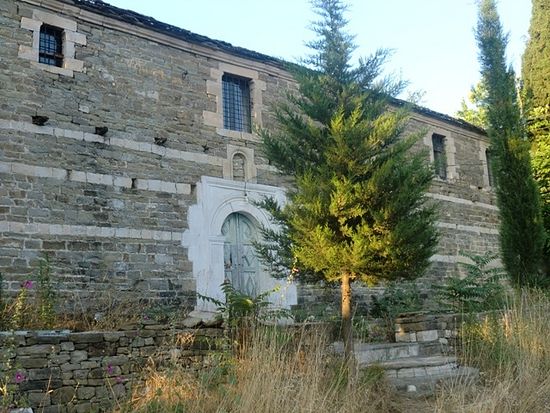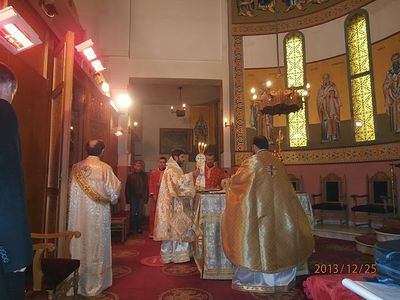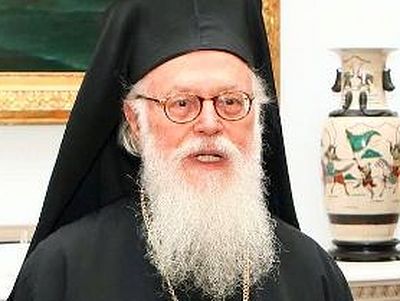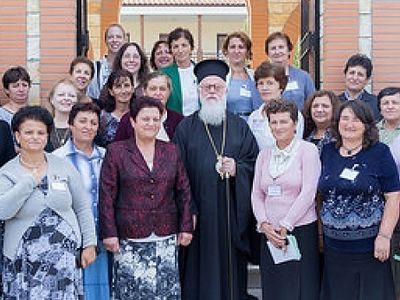Source: Balkaninsight.com
“By rule of thumb, every village has three churches, but ours has 13,” says Niko Bili, a caretaker in the village of Cercke, which lies a few kilometers from the town of Leskovik.
The village, located on a hill overlooking the town of Konitza in Greece, is home to only 28 families today.
Of the 13 churches in the village, most are in ruins and only a handful remain standing.
Most were destroyed during the Communist era. The then dictator, Enver Hoxha, outlawed religion entirely and proclaimed Albania the world’s first atheist state.
“How can God help us when we carried out a massacre,” Polikron Dhamo, a local villager says, dolefully. “If you can’t give, don’t give, but don’t destroy,” he adds.
Dhamo says the church of St Nicholas, the largest in the village, was wrecked in the Sixties, when it was turned into an arms depot and warehouse.
“Apart from St Mary’s church, which the regime declared a cultural monument, we were forced to destroy all the others,” he recalls.
“We took their beams and stones and built stalls for animals and a cultural centre.
For nearly half-a-century, under Hoxha’s brutal rule, Albania was the most isolated country in Europe, comparable to today’s North Korea.
After Hoxha declared Albania the first atheist country in the world in 1967, he launched a campaign of persecution against religion, destroying thousands of churches and mosques in the process.
Although Albania is a majority Muslim country, the Christian minority is significant in size.
According to the 2011 population census, 56.7 per cent of Albanians call themselves Muslim, 10.53 per cent Catholics, 6.75 per cent Orthodox and 2.09 per cent Bektashi Muslims. Another 2.5 per are atheists and 5.53 per cent are non-denominational believers, with the rest failing to give an answer.
Almost everyone in the village of Cercke is of Orthodox Christian background. Although there are no historical data about when the village was founded, locals believe a settlement has been there for at least 800 years.
When 75-year-old Dhamo enumerates the village’s 13 churches, he lists the saints whose names they bare and the days on which the village celebrates their festivals.
Dhamo says St Mary’s church dates back to 1473, making it the oldest in the Leskovik area.
Of the other churches, the exact date of construction is known only for the church of St Nicholas.
However, the village priest, Fr Sotiraq Bili, says St Mary’s church may be much far older than most people believe.
He thinks the church could date back 900 years, which is why it was declared a cultural monument and spared even during Hoxha’s uncompromising regime.
St Mary’s, “the big church”, as the villagers call it, lies 500 metres from the village, surrounded by forest. Its foundations were laid on a high rock.
Inside the stone walls are a handful of icons, all of them donated by villagers after religious practice recommenced in Albania in 1991.
Like many ancient buildings, the church is surrounded by myths and legends to do with its foundation.
“Legend has it that every time the masons started construction from the west, the walls would crumble three days later,” Velantina, a local resident, recalls.
“After this happened several times, the masons started construction from the east – and, after finishing the sides of three walls, the next day they discovered the remaining fourth wall had already been built!” she adds.
Niko Bili, the caretaker, believes that the 13 churches located in Cercka did not belong to the village alone.
He thinks they served nearby villages that no longer exist - casualties of the region’s tumultuous history of war and conflict.
Although the village is small, with only 28 resident families and 22 houses standing, some of the destroyed churches have been rebuilt since the collapse of the Communist regime.
One is the small church of St Demetrius, which a local resident, Dhimitraq Prici, rebuilt in 2005.
Apart from its religious heritage the village also takes pride in a more living monument, the laurel tree that shades the courtyard of the church of St Nicholas.
Gaqe Milo, aged 83, says a former villager brought it to the village long ago.
“When Albania was invaded by the Ottomans, Kico Marina, a man from Cercka, went to Istanbul and brought back a sprig of laurel that was no bigger than a parsley leaf,” he recalls.
“He planted it in front of the church, and it grew and grew, until you see the monument we have today,” he concludes.




